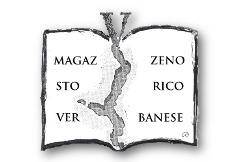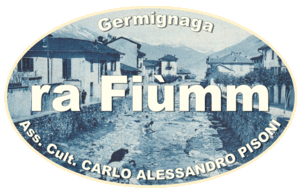STRUMENTI CULTURALI
del Magazzeno Storico Verbanese
- Autori:
- Capel Cure, Edward Henry
Oxford, Pallanza
Diplomatico,
- Titolo:
- Anni Pubblicazione:
- 18660000 ÷ 19230000
- Editori:
-
- Argomenti:
-
Leonardo Parachini
- Note Generali:
- Figlio di Edward e Gertrude Louisa Selwyn-Ibbetson; sposatosi nel 1889 con Muriel Elizabeth Anna Louisa Dixwell-Oxenden, ebbe una figlia Bettina Eleanora Zoe (nata nel 1898), poi andata sposa al barone Carlo Felice Malfatti di Montetretto.
Diplomatico inglese, addetto commerciale all’ambasciata del Regno Unito a Roma. Fu insignito dei titoli di Grand’Ufficiale dei Ss. Maurizio e Lazzaro, e commendatore della Corona d`Italia.
Dal dicembre 1900 al 5 dicembre 1913 affittò dalla famiglia Borromeo Arese l`Isolino San Giovanni, in cui era solito passare periodi di riposo. Scaduto il contratto, e passata l`affittanza in diverso ordine di tempo a Paolo Wolff-Metternich e a Vittoria Caetani Sermoneta principessa di Teano, il Capel Cure nel 1913 acquistò dalla famiglia Ferraris villa ”Mirasole” sulla Castagnola di Pallanza; la ristrutturò e cambiò il nome in “Villa Della Quercia”, dal suo pseudonimo letterario di ”Gian della Quercia”, con cui nel catalogo bibliografico nazionale compaiono almeno tre sue opere in lingua italiana: Sul Meriggio (1900); Il risveglio (1902); Storia della nobile compagnia dei delfini, compilata dal presidente, per uso (o abuso) dei delfinotti (1909).
Nell`agosto del 1916 organizzò nella propria villa di Pallanza un incontro tra le delegazioni inglese (capitanata dal ministro degli Esteri, Runciman) e italiana (composta dal ministro dei Trasporti, Arlotta, e dal ministro dell’Industria, De Nava) per discutere del costo del carbone di importazione oltre Manica in continuo aumento a causa della guerra.
Così ricorda nelle proprie memorie l`evento il diplomatico inglese sir James Rennel Rodd:(1) «The difficulty of finding freights with an increasing demand and a constantly diminishing tonnage had become a nightmare, and Italy, which produces hardly any of the raw material of industry, was exposed to continual anxiety as to whether her indispensable requirements in coal and grain could be satisfied before the narrow margin of stock was exhausted. One particular Roman journal indulged in almost passionate outbursts against the greed of commercial Britain and her ship-owners in a series of articles which showed that the writer did not understand the factors which governed the question. Mr. Runciman, who dealt most ably with these issues, had with infinite trouble and patience, after many conferences with shippers, coal-owners and exporters, succeeded in establishing certain schedules of maximum prices for coal exported from Great Britain to France. It might be claimed with apparent reason that it would be only equitable to do the same for Italy. But the situation was governed by wholly different conditions. French ports were near, relatively small vessels could be used, and some 75 per cent of the tonnage carrying coal to France, whose Mediterranean ports were deliberately excluded from the arrangement, was British or French, and could therefore be controlled. On the other hand 75 per cent of the tonnage serving the Mediterranean was neutral. Such tonnage was available only because rates were high. America was a very keen competitor for neutral shipping, and any attempt to establish a maximum freight would have had for its result the desertion by these vessels of their actual ports of call for more remunerative voyages. We had no further tonnage available with which to replace them. Nor would any advantage be gained by limiting rates for the small proportion of British tonnage carrying coal to the Mediterranean, as prices would be regulated by the 75 per cent majority engaged in the trade. The most that could be anticipated was some limitation by negotiation of the price of coal f.o.b. in England.
In August Mr. Runciman came to Italy for a conference on the coal question. At Capel-Cure`s suggestion Pallanza on the Lago Maggiore was chosen as the meeting-place. There he not only placed his own house at my disposal, but induced the Marchese di Casanova, the brother of Donna Bettina, to offer hospitality in the beautiful villa of S. Remigio to Mr. and Mrs. Runciman and the Italian delegates, the Ministers Arlotta and di Nava. Casanova, a really remarkable musician, a scholar and an artist in every fibre, with a critical sense and tastes shared by the charming Irish cousin who became the Marchesa, was probably for the first time in his life drawn into the unfamiliar society of economists and politicians, with whom I apprehended he would feel little at ease. Our debt to him was all the greater for his splendid hospitality, which made a sternly business conference one of the pleasantest episodes of those grim years of war. The results were I think eminently satisfactory, as much was explained which had hitherto not been understood, and a basis was established for future supplies on the most favourable conditions which circumstances permitted. Runciman was a master of his subject, and his efforts to do justice to the other side of the question facilitated negotiations. I now understood why Kitchener, speaking of the political associations in which he never felt at ease, had told me that he felt more drawn to Runciman than to any other member of the Cabinet. We were fortunate in having sympathetic collaborators in Arlotta and di Nava, assisted by the irreplaceable Attolico who, with one foot in London and one in Rome, did such valuable and difficult work in wrestling with the problem of supplies. When the conference broke up we paid a hasty visit to Milan, where we were most warmly received by the Chamber of Commerce, and then went on to see the President of the Council at Turin».
Le spoglie mortali di Edward Capel Cure riposano nel Cimitero dei Protestanti di Firenze.
In merito al Convegno di Pallanza, si veda la scheda nella sezione Loca, Pallanza, Conferenza Italo-Inglese
Fonti Internet:
http://net.lib.byu.edu/~rdh7/wwi/memoir/Rodd/Rodd12.htm- e con modifiche e integrazioni di:
- [Carlo Alessandro Pisoni]
Magazzeno Storico Verbanese
 A tutti gli amici e studiosi
che nel tempo avete condiviso o vi siete interessati alle attività della Associazione Magazzeno Storico
Verbanese, dobbiamo purtroppo comunicare che in seguito alla prematura scomparsa di Alessandro Pisoni,
la Associazione stessa, di cui Alessandro era fondatore e anima, non è più in grado di proseguire nella
sua missione e pertanto termina la sua attività.
A tutti gli amici e studiosi
che nel tempo avete condiviso o vi siete interessati alle attività della Associazione Magazzeno Storico
Verbanese, dobbiamo purtroppo comunicare che in seguito alla prematura scomparsa di Alessandro Pisoni,
la Associazione stessa, di cui Alessandro era fondatore e anima, non è più in grado di proseguire nella
sua missione e pertanto termina la sua attività.Biografia Carlo Alessandro Pisoni
Carlo Alessandro Pisoni (Luino, 1962 - Varese, 2021). Seguendo le orme del padre Pier Giacomo, dal 1991 al 2017 è stato conservatore, per gentile concessione dei principi Borromeo, dell'Archivio Borromeo dell'Isola Bella. Appassionato studioso e ricercatore, ha sempre voluto mettere a disposizione degli altri conoscenze e scoperte, togliendo la polvere dai fatti che riguardano Lago Maggiore e dintorni; insieme a studiosi e amici, ha riportato alla luce tradizioni, eventi e personaggi passati dal lago, condividendoli con la sua gente.
